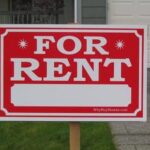In today’s real estate market, sellers are frantically searching for someone—anyone!—to purchase their homes for a reasonable price, and turning up empty in the end. It is definitely a buyer’s market, which means that sellers are having to rethink their strategoes for selling their homes.
One of the alternatives to keeping the house on the market is a lease-purchase option, which can be a life-saver for many sellers.
A lease-purchase option is an agreement that resides somewhere between a mortgage and a lease. As the seller, you will essentially be the landlord for the buyer, but the money he or she pays in rent will also be put toward the sale purchase of the home. This gives you a monthly income from rent, and also puts you one step closer to selling the house.
It isn’t a good idea to pursue a lease-purchase option if you need the cash from the sale of your home to buy a new one. Although you might be able to receive a modest down-payment before the lease terms begin, it won’t be sufficient to finance a new place to live. Instead, lease-purchase options are perfect for sellers who already have a new home or have sufficient financial resources to buy one without selling the old.
The most dangerous aspect of a lease-purchase option is the fact that most buyers who request this arrangement are unable to secure a traditional mortgage on their own. They might have defaulted on a mortgage in the past or perhaps they have blemished credit; whatever the case, you have to be careful about offering a lease-purchase option.
The major benefit of a lease-purchase option is that sellers usually make more from the sale of their home in this agreement. First, the buyer pays the seller an option amount, which is good-faith money given with the intent of reserving the house to purchase it later. In most cases, the option money is good for a period of one to three years, during which the buyer will pay rent, a portion of which will go to the purchase of the home.
The option money, however, is not meant as a down payment on the home, and is free and clear to the seller even if the buyer choosing not to exercise his purchase option at the end of the lease.
For example, let’s say that you have a home valued at $124,000. In many cases, lease-purchase options include selling the home slightly above market value, so we’ll say that you agree on a sale price at the end of the lease for $125,000. The buyer agrees to pay an option of 10% ($12,500) for the option to purchase at the end of the lease. You pocket the 10%, and you do not have to repay it or put it toward the price of the home. You then agree on a monthly rental amount, some of which will go toward the price of the home.
At the end of a lease-purchase option agreement, the buyer must apply for a conventional mortgage to pay for the home. As mentioned above, these options usually last a maximum of three years, during which the buyer will repair his or her credit in anticipation of buying the home. You will also act as landlord over the home, which means that you will have a rental agreement.





